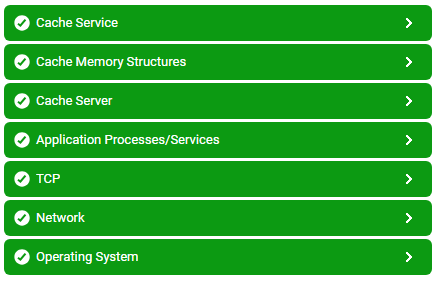Monitoring the Intersystems Cache Database
eG Enterprise offers a specialized monitoring model for the Cache database (see Figure 17) that monitors the database 24 x 7 and proactively alerts administrators of probable issues in its operations, so that issues are trapped very early and resolved before its too late.

Figure 17 : Layer model of the Cache database server
Each of the layers depicted by the hierarchical model above, is associated with a wide variety of tests that measure the health of various factors influencing database performance. The performance metrics reported by these tests shed light on the following:
|
Cache Service/Process Monitoring |
|
|
Cache System/ Database Monitoring |
|
|
Ecp Application/Data Server Monitoring |
|
|
Cache Performance/Buffer Monitoring |
|